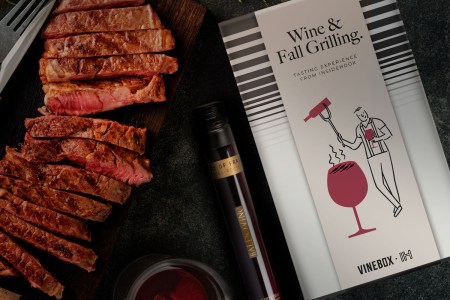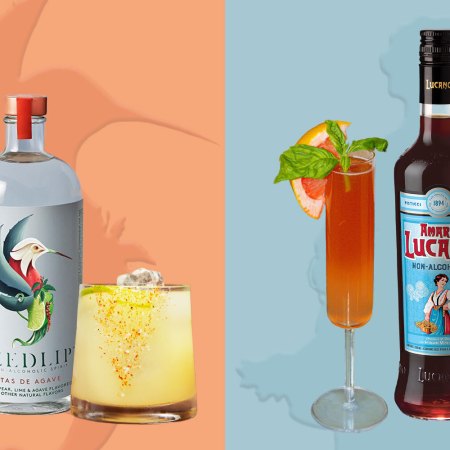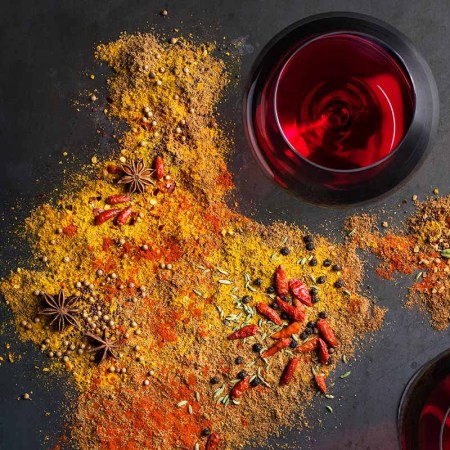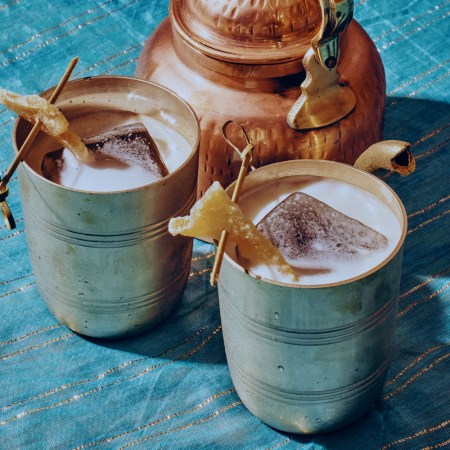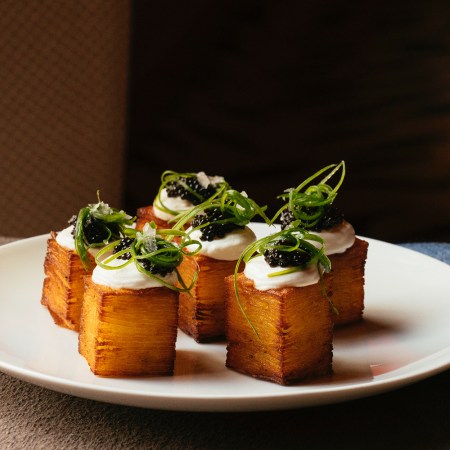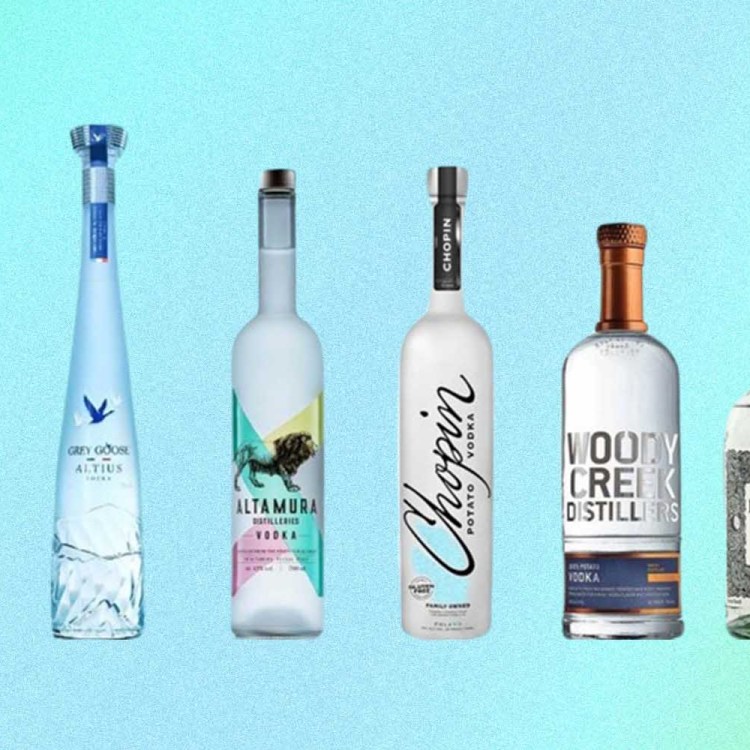Whether we’re thinking about the rise of savory cocktails, powerfully delicious N/A libations or throwback drinks with an unexpected contemporary twist, bar culture has recently gotten a much-needed high-velocity kick in the pants. Now that buzz is infusing the restaurant world. Younger adult diners, in particular, don’t just want better and more thoughtful cocktails, they want ones that pair seamlessly with playful, highly-spiced, imaginative cuisine. And they’re willing to pay more for the privilege.
Let’s look at the numbers. Gen Z (born 1997 to 2012) is the country’s most diverse population in history, and after coming of age during the pandemic, members of this cohort have a unique and distinct set of priorities. About 22% has at least one immigrant parent, so they often grow up dining on an internationally-minded menu at home. According to the food and beverage intelligence platform Datassential, global food on restaurant menus was up 15% in 2023 compared to 2022. African, Costa Rican and fusion cuisines like Japanese-Peruvian ranked high.
The Perfect Wine Pairings for 6 Fall Grilling Favorites
InsideHook teamed up with Vinebox for an exclusive tasting experienceThey are digitally native, and about 85% report that social media impacts their purchasing decisions, according to a 2023 ICSC report. But members of Gen Z also prefer to support environmentally- and sustainably-minded companies or products (47%) and ethical labor practices like fair trade (42%). While they clearly have lofty expectations and may drink less than Millennials and other older generations, they are willing to spend more for higher quality food and drink.
Taking Cues From the Menu
While wine and beer lists have been evolving for years to incorporate more styles and regions, most beverage directors have only just started busting out of the Martini and Cosmo cage they’d been marinating in for decades. Not that the escape has been easy.
“What is a cocktail at a Middle Eastern restaurant supposed to be?” mused Scott Stroemer, Beverage Director at the Michelin-starred Galit in Chicago. “Drinking is not central to the culture in the Middle East. I’ve found that connecting with the cuisine and brightening cocktails with seasonal elements found in the recipes makes for memorable experiences that people return for.”
The cocktails at Galit are frequently made with sumac, orchidea, Tellicherry pepper, Urfa and more. “I’m not here to reinvent the wheel,” Stroemer says. “We’ll still offer a Negroni, but it will have culinary elements by infusing it with in-season fruit, produce and spices.”
For Jarett Karlsberg, Beverage Director at Williamsburg, Brooklyn’s Wythe Hotel, which houses Le Crocodile and Bar Blondeau, every cocktail is made with the menu in mind.
“It is essential that we have cocktails that pair well with our food,” Karlsberg says. “I often collaborate with chefs when creating our menus, and we try to create something beautiful and sophisticated and tell unique stories in our food and drinks.”
A pairing that embodies Karlsberg’s embrace of “real purpose” and fun innovation is the duck hot dog on a pretzel bun with kohlrabi slaw at Bar Blondeau with the Verbena Highball, which is essentially a Japanese whisky highball featuring house-made lemon verbena syrup and hopped soda.
Creating “Soft Luxury” With Food and Cocktail Pairings
Pairing lowbrow comfort food with highfalutin locavore drinks is everywhere. “It’s soft luxury,” says Elvis Rosario Mendez, Beverage Director at Chica & The Don in Manhattan. “Guests are looking for that premium experience that brings memories and comfort to them, and if you add an international flair, you just broaden the appeal.”
At Chica & The Don, that comes in food and cocktail pairings like the light camaron y pescado ceviche with the Tango Tropical, a drink made with tequila blanco, lime, mango liqueur, tepache, spicy agave falernum and clarified milk.
“Both highlight tropical flavors, and the ceviche’s fresh and zesty flavors from the broth are complemented by the cocktail’s creamy elements,” Rosario says. “Pairings like this, often shared on social media by younger diners, also present us with a unique opportunity to educate our younger guests and give them a deeper understanding of what it means to be of Latin American descent.”

At The New York EDITION hotel, owned by Marriott, Ian Doublas says he was tasked with elevating the cocktail program when he came on as head bartender. “It was really about finding the balance between corporate mandates and the freewheeling Wild West of many cocktail programs in New York,” he says, adding that they sent staffers to Tales of the Cocktail in New Orleans and brought in the award-winning team from Paradiso in Barcelona to do a takeover and school their bartenders.
“We also developed cocktails that are fun to drink with some of our popular bar snacks,” Doublas says. “I see it as the next step in what has been a 20-year cocktail renaissance. Right now, it’s about creating culinary elements within the cocktail itself that speak to guests. Bringing that comfort-luxury kitchen mindset to the bar.”
That can mean cotija cheese garnishes or strawberries pickled in apple cider and sugar, then pureed and mixed into drinks. This fall, he introduced a pickled fig cocktail with an edible fig, which with pairs with goat cheese croquettes, what Doublas has dubbed their “fancy mozzarella sticks.”
Moving Away From the Tried and True
A beautiful Martini is an eternal marvel that countless generations have and will continue to sip with appreciation. But it certainly won’t stop anyone in their tracks (or pause a casual scroll through social media). “Younger folks are staying away from classics like Cosmos or Mules and moving toward things that are a bit more ingredient or region-focused,” Rosario says.
And if it is classic, the twist better add up to more than a well-sliced orange peel.
“Our Forest Old Fashioned was concocted following a conversation with Leanne, our consulting beverage director, about our ongoing obsession here with mushrooms of all kinds,” says Cressida Greening, founder of Winona’s in Bed-Stuy, Brooklyn. “This is truly a gastronomic beverage with mushroom-infused bourbon and Pedro Ximenez sherry.”
More Cocktails, Less Booze
Cocktail culture has entered its sober era. And sobriety has never been more enchanting. While there’s still plenty of booze to be had for those who want it, there are finally an array of options for someone who never drinks or folks who simply want a night off. Finding a way to elevate the menu through compelling flavors and textures has become the priority at Esmé in Chicago, according to Beverage Director Stevan Miller, who makes sure every pairing menu has creative non-alcoholic options for each course.
“We love to find ingredients that enhance the tasting menu but also shock and surprise,” Miller says. “For instance, the hibiscus ice cube in our N/A Cherry Chile Jam. As it melts, the drink acquires herbaceous bitter qualities that elevate the kombu ice cream and caviar dish it pairs with.”
Even at restaurants where alcohol would seem like an essential ingredient for a successful pairing, they are finding thoughtful N/A cocktails are selling well.
“Our N/A cocktail The Sword is one of our best-sellers, hands down,” says Wine Director Carlin Karr, who manages the entire drinks program at Englewood, CO’s Osteria Alberico, part of Bobby Stuckey’s James Beard Award-winning Frasca Hospitality Group. “It’s got Stappi bitter soda as its base, which tastes like a non-alcoholic Campari. We froth freshly-squeezed orange juice over the top, which makes it look like orange fluff. Then we pour it into a Tom Collins glass with an ombre effect. It’s fun to drink.”
Prioritizing Progressive Values (and Fun)
Offering a good time while doing good with cocktails also resonates.
“Our clientele loves us in part because we share their values,” says Karlsberg of Wythe Hotel’s commitment to featuring “hard-to-find brands made responsibly, cleanly and from local ingredients. Younger people in general are more conscious about protecting the environment and are willing to pay more money to do so.”
At Esmé, the best-selling cocktails are their most expensive, but they are also fleeting creations that benefit local artists. “We partner with a local artist every few months,” Miller says. “Their work will adorn our restaurant, and we tailor a number of cocktail pairings with their work.” Their cocktails range from $16 to $25, but Miller says the ones inspired by contemporary pairings typically occupy the top-tier of that range.
“When I go out, I feel the extra $5 is well spent on a memorable drinking experience, and our guests seem to agree,” Miller says. “I am often reminded of the Rick Rubin musing that ‘when you make something truly for yourself, you’re doing the best thing you possibly can for the audience.’”
In this economic environment, with close to 80% of Americans feeling that even eating fast food is a “luxury,” half measures and ho-hum cocktails aren’t going to keep those seats warm. Duck hot dogs and lemon verbena cocktails though? We might be here all night.
Join America's Fastest Growing Spirits Newsletter THE SPILL. Unlock all the reviews, recipes and revelry — and get 15% off award-winning La Tierra de Acre Mezcal.

